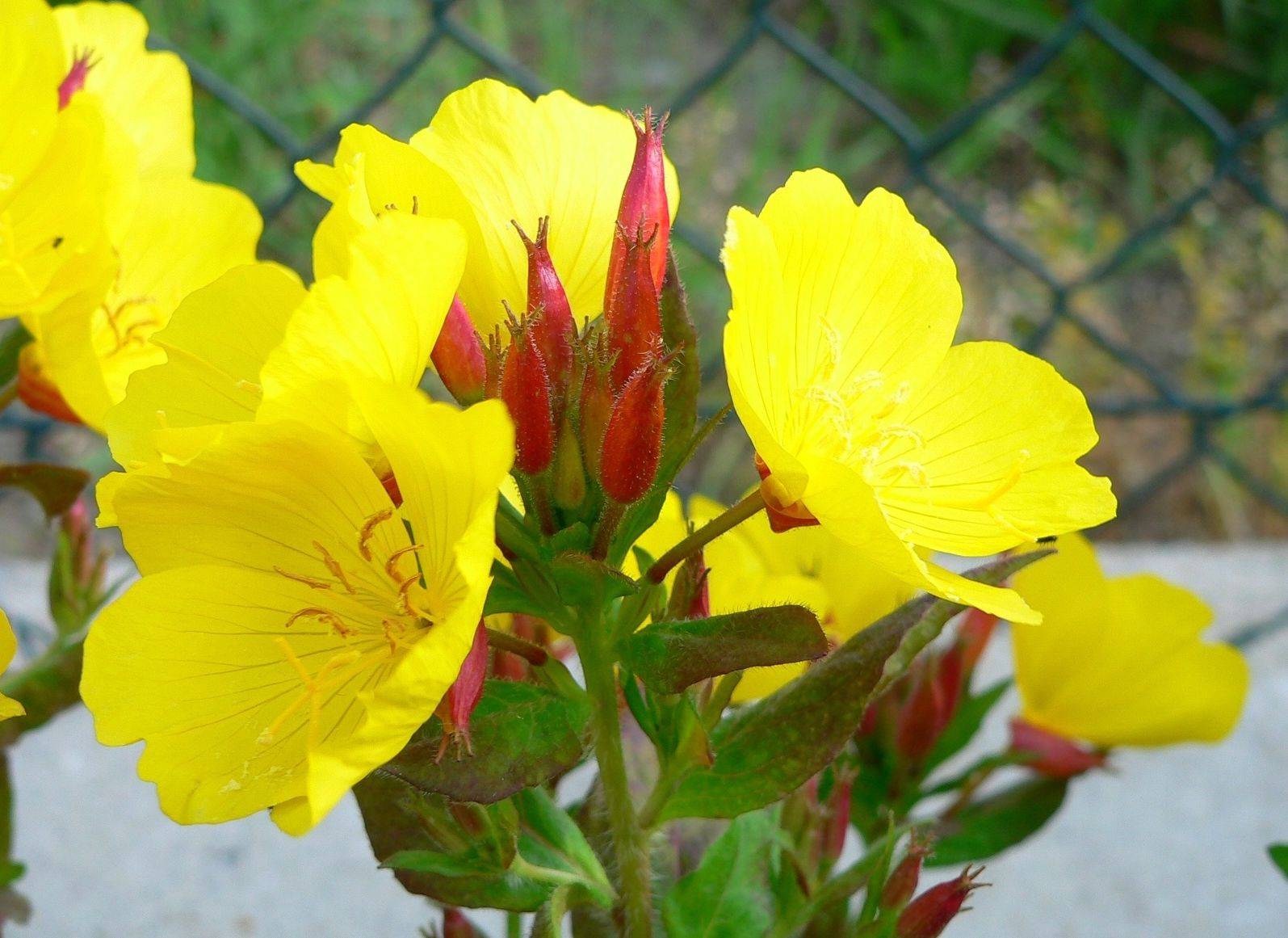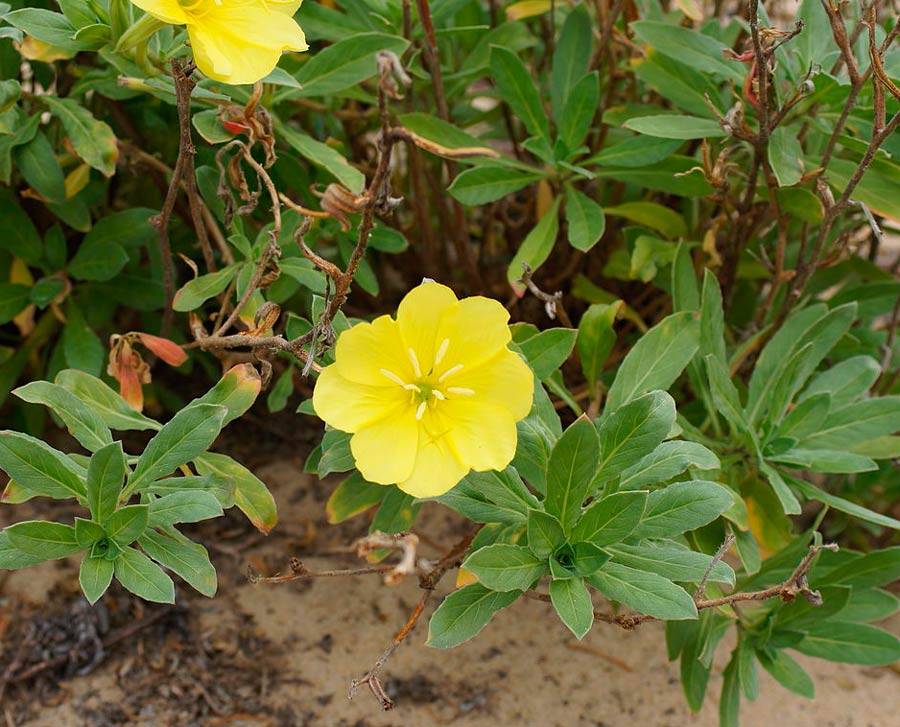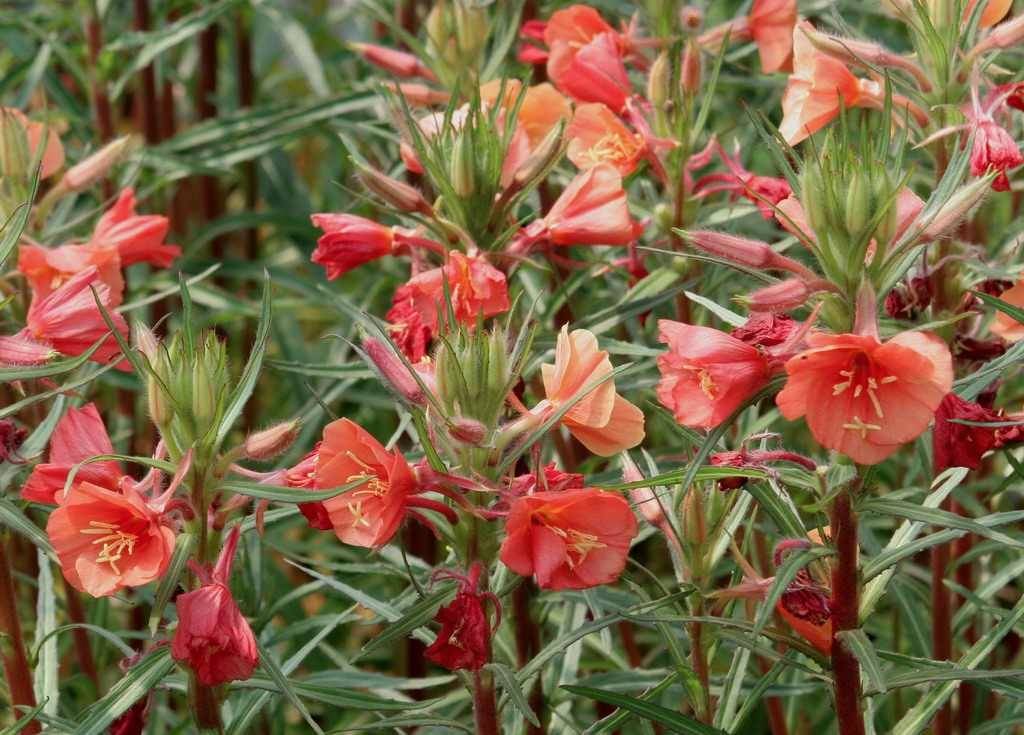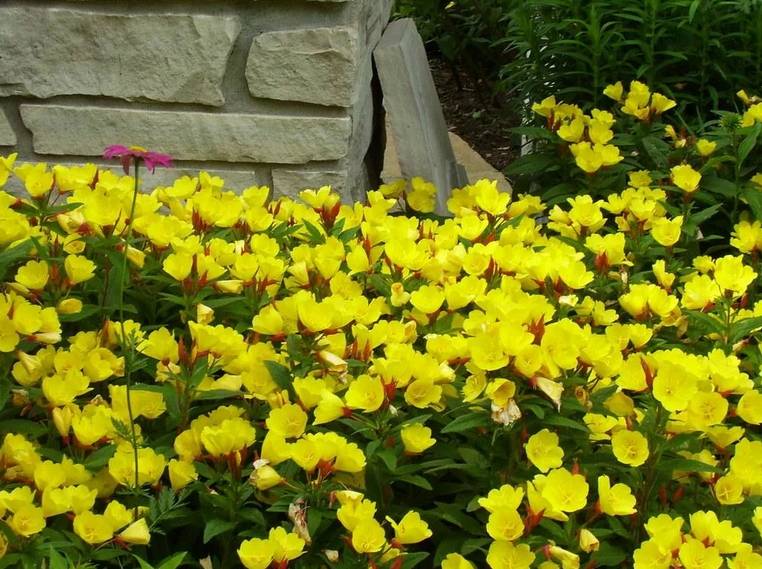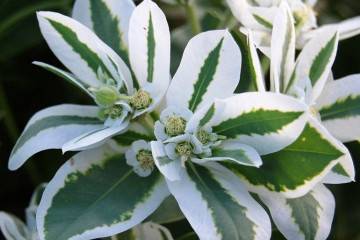Evening primrose - night candle
Content:
Evening primrose has another name - primrose, evening primrose, but more often it is simply called a night candle. Unpretentious and fragrant, she opens her corollas in the evening hour!
Evening primrose - Missouri night candle
Missouri evening primrose (Oenothera missouriensis), unlike other tall species, is a groundcover annual or perennial with numerous creeping stems growing from a basal rosette.
The origin and appearance of the primrose or evening primrose plant
The flower belongs to the fireweed family (Onagraceae) and belongs to a very numerous genus (from 80 to 150 representatives), which includes herbaceous and shrubby evening primrose. In its natural environment, the plant is found in America and in Europe. It has been cultivated in culture since 1811.
The bush grows in height no more than 40 cm. The shoots gradually lengthen and capture the surrounding space. The leaves are green, narrow, lanceolate with a sharp tip, dense to the touch, with a noticeable central and veins extending from it.
Plant flower description
A cup-shaped flower about 10 cm across. Petals are golden yellow, evenly colored with a rounded and slightly serrated edge. Like other types of night candle, Missouri-style flowers bloom at night. The aroma is pleasant, with noticeable citrus notes. It begins to bloom in mid-June and does not stop until frost comes.
Types and varieties of evening primrose
The number of varieties is very large - annuals, biennials and perennials, but the most spectacular and popular among gardeners around the world are deservedly considered:
Enothera Drummond
A perennial shrub, stretching in height from 30 to 80 cm. The central stem is strongly branched. Leaves - dark green, opposite, pointed, approximately equal in length to the petals. The flowers are four-petal, lemon-yellow, up to 7 cm in diameter.
Evening primrose multicolored
Biennial up to 120 cm high. The petals are colored orange. Among modern varieties, Sunset Boulevard is popular, which grows only up to 45 cm in height and up to 25 cm in width. The shade of its petals is a rich brick-orange.
Evening primrose
These bushes are also quite undersized - up to 40 cm. The leaves differ from other species by a sparsely toothed edge. Flowers of the cupped shape, classic for evening primrose, are collected in ears. The petals are pink or white. Corollas reach a diameter of 5 cm. The popular variety "Delicate Orchid" has similar characteristics and color of the corollas.
Transplanting evening primrose after purchase in open ground
Evening primrose seedlings take root well after transplanting into open ground, as do adult plants grown in containers.All the time while flowering lasts, you can plant in a pre-prepared place. Bushes grow quite quickly and strongly, regardless of the specific variety. Preference is given to soils with a proportion of lime and good drainage.
What you need to plant evening primrose
By its nature, the flower is unpretentious, frost-resistant. It shows good results in various temperature regimes, but + 16-20 ° C are considered optimal. It tolerates heat without losing buds, does not break from the wind and does not suffer from drafts. It is rarely grown at home, but if desired, nothing prevents you from sowing seeds in a home container.
Choosing the best place
Most species prefer bright sun, but can also be grown in partial shade. In a sunny area, the buds bloom only in rainy weather and at night. In the morning hours, those of the flowers that have not yet had time to burrow are pollinated by bees. New buds bloom every evening.
If a shady or semi-shady area is chosen, then the buds in such conditions can bloom during the day, but there will be no such abundant flowering as in the sun.
Step-by-step planting process
Perennials are planted in the following order:
- The site is dug onto a shovel bayonet, simultaneously adding 2 cups of nitrophoska and up to 3 kg of compost or humus per 1 m2.
- The day before the intended planting, the soil is abundantly moistened.
- An individual hole is dug under each plant according to the size of the root ball.
- Water abundantly immediately after planting.
The distance between plants is observed, focusing on the recommendations of the manufacturer of the planting material, but usually at least 25-30 cm is left.
Reproduction
The delicate flower can be propagated by seed or vegetatively. During the ripening of the seed pods, they are scattered around, after which next year young plants will sprout everywhere, like weeds. Therefore, the bolls are removed, leaving only the minimum for sowing for the next year. Tall perennials are not allowed to grow in breadth, digging slate around the roots to prevent spontaneous seizure of new territories.
Propagation by cuttings
In May, fresh shoots can be used for cutting cuttings, which are immediately added to the soil and watered. Rooting is fast enough. Large bushes in late May or early September can be dug up and whitewashed into several parts, planting each separately, as an independent plant.
Evening Primrose Missouri Night Candle - Growing From Seed
Seedlings are sown in April in greenhouses, and sowing in open ground is carried out in May, when the soil warms up to + 10 ° C. The seeds are small, they are buried only by 5 mm. Until shoots appear, care should be taken to ensure that the soil does not dry out. The pick is carried out at the stage of 3 true leaves, and planted in open ground at the end of May.
Evening primrose care
The main care is watering and weeding. Young plantings are mulched to prevent overgrowing with weeds, and competitors are not afraid of adult plants. Tall varieties need tying.
Watering mode
The plant is very sensitive to soil moisture. If the soil is poured too much, the roots will rot and the flowers will die. The place is chosen for planting so that there is never stagnation of water (on a hill). Water when the topsoil is completely dry.
Top dressing
With regular feeding during the flowering season, the number of buds and the brightness of the flowers increase. Fertilizers are applied twice a month: 1 tbsp. superphosphate and potassium sulfate per 1 m2. Instead, you can use wood ash as well as nitrophosphate.
Features of care during the flowering period
Fading stems are not removed. They do not in any way affect the beauty of the flower and the duration of flowering in general. If the evening primrose was planted in a conspicuous place, then the wilted corollas are removed only for aesthetic purposes.
Features of care during the rest period
With the onset of autumn, when frosts are approaching, the ground part is completely cut off. No trimming is required at other times.
Preparing for winter
Evening primrose frost resistance is good, it does not need to be covered for the winter. It is quite enough, after cutting the ground part in the fall, to sprinkle the soil with a layer of mulch 5 cm thick. Peat or compost is well suited for these purposes.
Enotera yellow candle is a grateful perennial, delighting with fragrant flowers of lemon, yellow, pink, orange shades. To your taste, you can choose a creeping or tall variety.
